How to get rid of clover on a lawn: expert tips for clearing this weed
Want a pristine patch of turf? This advice on how to get rid of clover on a lawn is for you

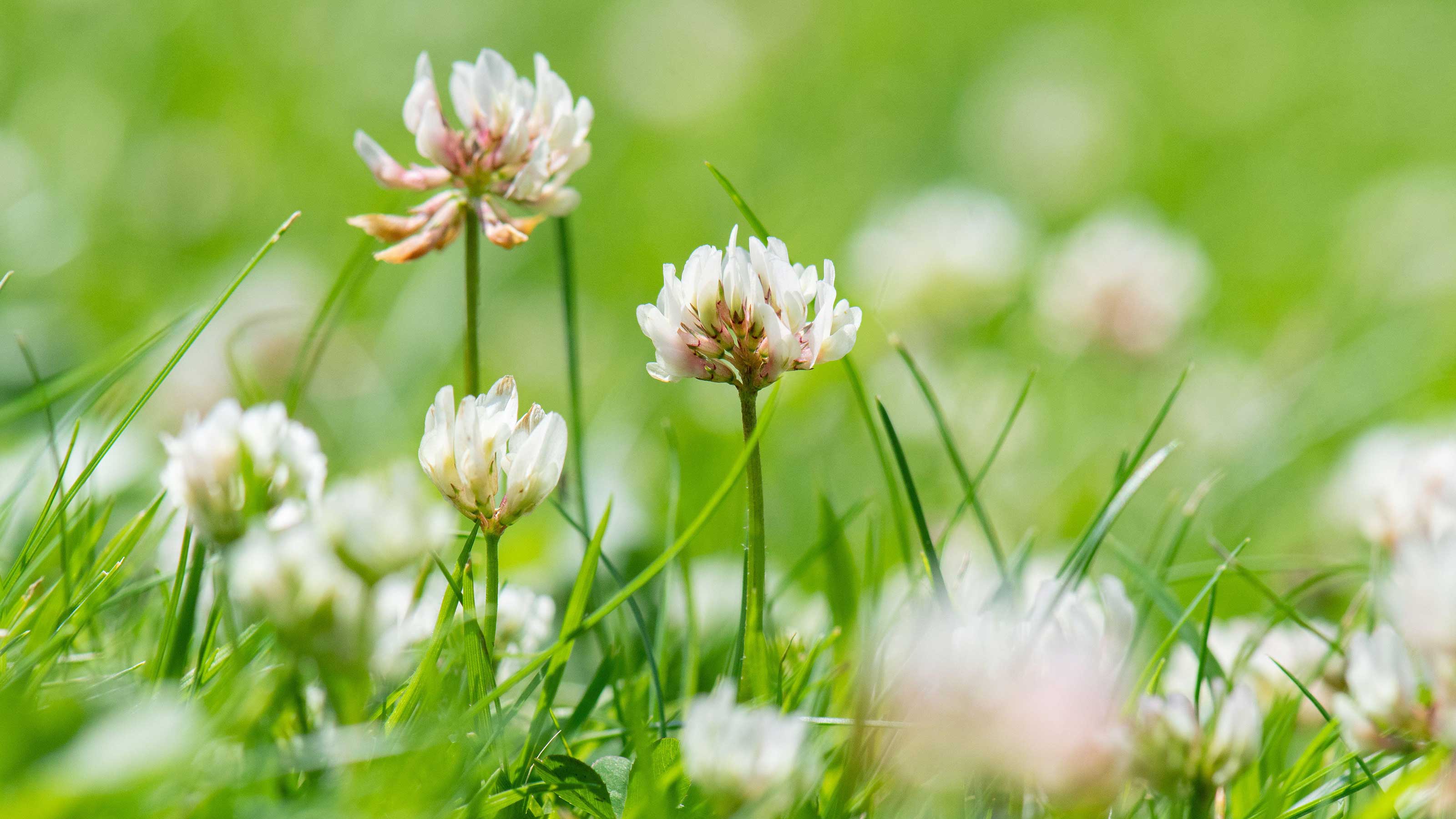
If you're keen for a stretch of immaculate green turf, then learning how to get rid of clover on a lawn will come in handy.
Some gardeners don't mind the creeping plants, also known as trefoils, with their pretty white, pink, or yellow flowers and trifoliate leaves. But, for those who prefer their grass to be weed-free, it can be one of the trickier intruders to eradicate, with many herbicides falling short.
Luckily, there are some practical tips to try to get rid of clover, which we've rounded up below. And once you've cleared it from your plot, you can concentrate on other, more design-led ways to make your lawn look its best, such as stylish lawn edging ideas.
How to get rid of clover on a lawn in 3 simple steps, without chemicals
Grabbing a bottle of chemicals should always be a last resort in gardening, especially when it comes to wildlife gardens. So, before you do so, try these steps on how to get rid of clover on a lawn.
1. Improve the quality of your turf
The most important factor in learning how to get rid of lawn weeds of all kinds is to ensure your grass is healthy. As David Hedges Gower, the founder of the Lawn Association says, clover is normally a sign of a poorly maintained lawn. For instance, it particularly thrives in nitrogen-poor ground.
There are, however, some simple steps you can take to improve the conditions of your turf and the soil beneath.
David says to start by looking at your soil. 'Check the pH and see if it's suitable to be growing grass,' he says. In most cases, the optimal level is between 6.0 and 7.0. Soil that is too acidic can make it difficult for grass to grow, and easier for some types of clover. It can be balanced with soil amendments, such as lime.
Also, 'check your compaction levels,' says David. 'Clover often does well in poor soils that are very compacted, so start to hollow tine aerate your lawn at least once a year.'
What's more, if you're creating a new lawn by planting grass seed, and want to reduce the risk of clover invading it, ensure you pick a good species that is weed-free. It's worth paying extra for a better quality mix.
'Feed the lawn using a high-quality lawn feed to further enhance the grass,' he adds. You can find more spring lawn care tips and autumn lawn care tips in our guides.
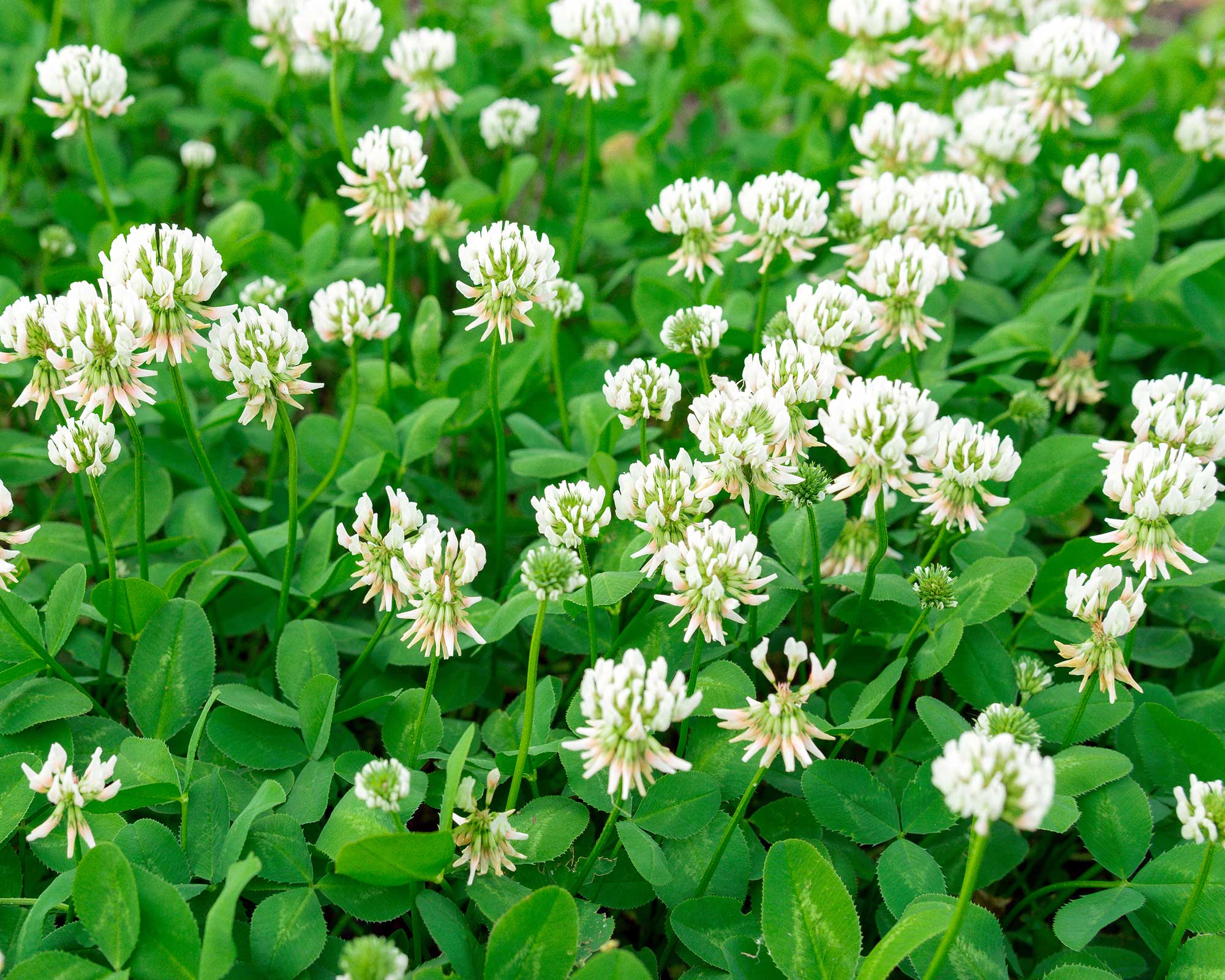
2. Dig clover up by hand
Spotted some clover in your plot? 'Dig it out at a very early stage before the plant starts to send out runners,' advises David. Try to get all the roots to stop it from growing back. It's easiest to do this when the soil is moist.
This will get increasingly trickier to do the longer you leave it, as they grow large networks of stolons that can be very time-consuming to remove. In more invaded areas, you may just wish to remove whole areas of lawn and replace it with fresh turf. Our guide on how to lay turf will come in handy here, or you can simply repair the lawn patches with seed.
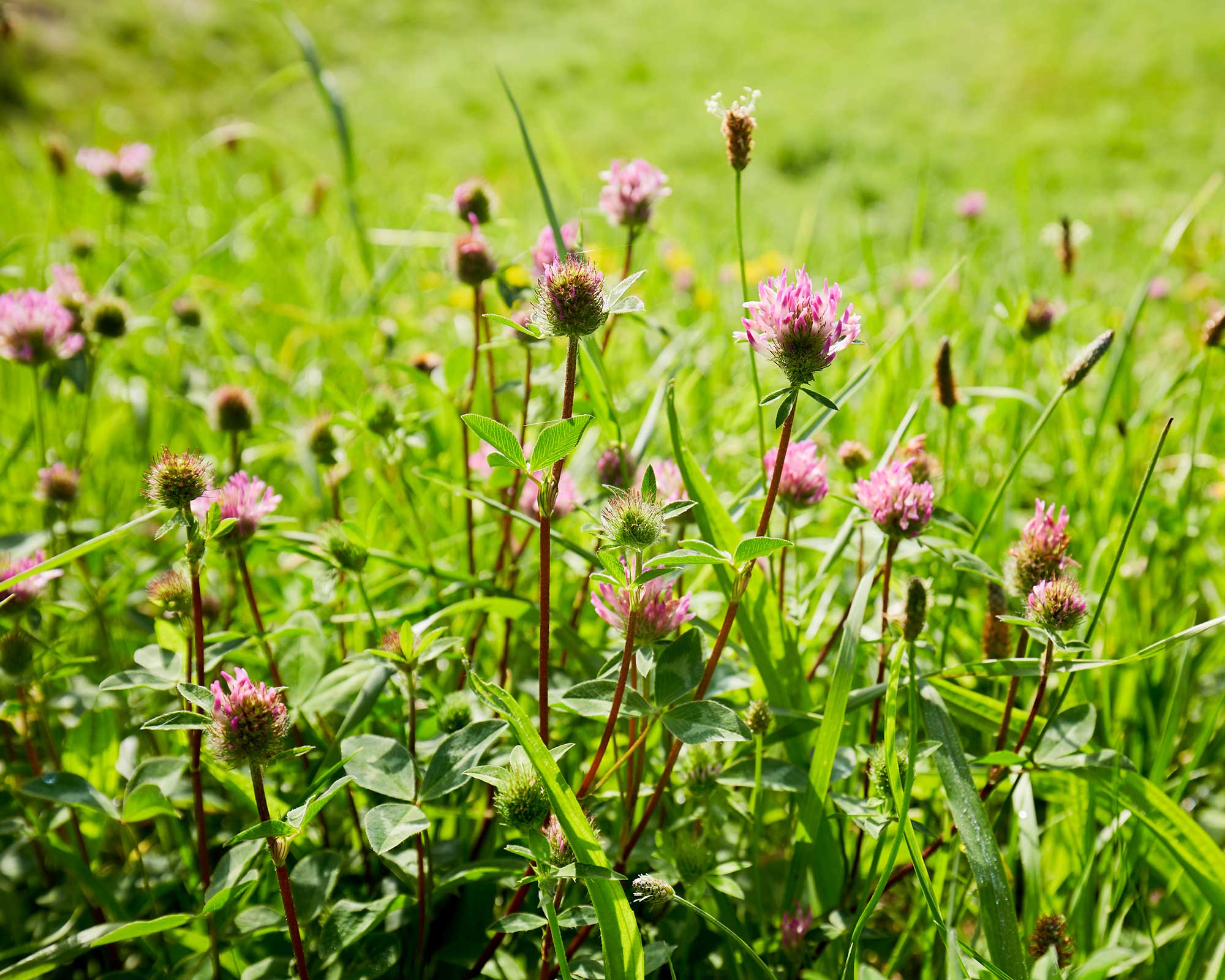
3. Mow on a high setting
Letting your grass grow a little longer can help to eradicate this weed.
Keep the mower on a setting of around 1in–1.4in (25–35mm) to help the turf gain strength and block out light for the clover, recommends David.
If the weed is widespread, rake the turf first to lift stems before mowing, adds the RHS. Remember to always use a grass box on the mower to minimize spreading seeds around and worsening the problem.
Need to update your tool for the job? Our buying guide to the best lawn mower is a good place to start your search.
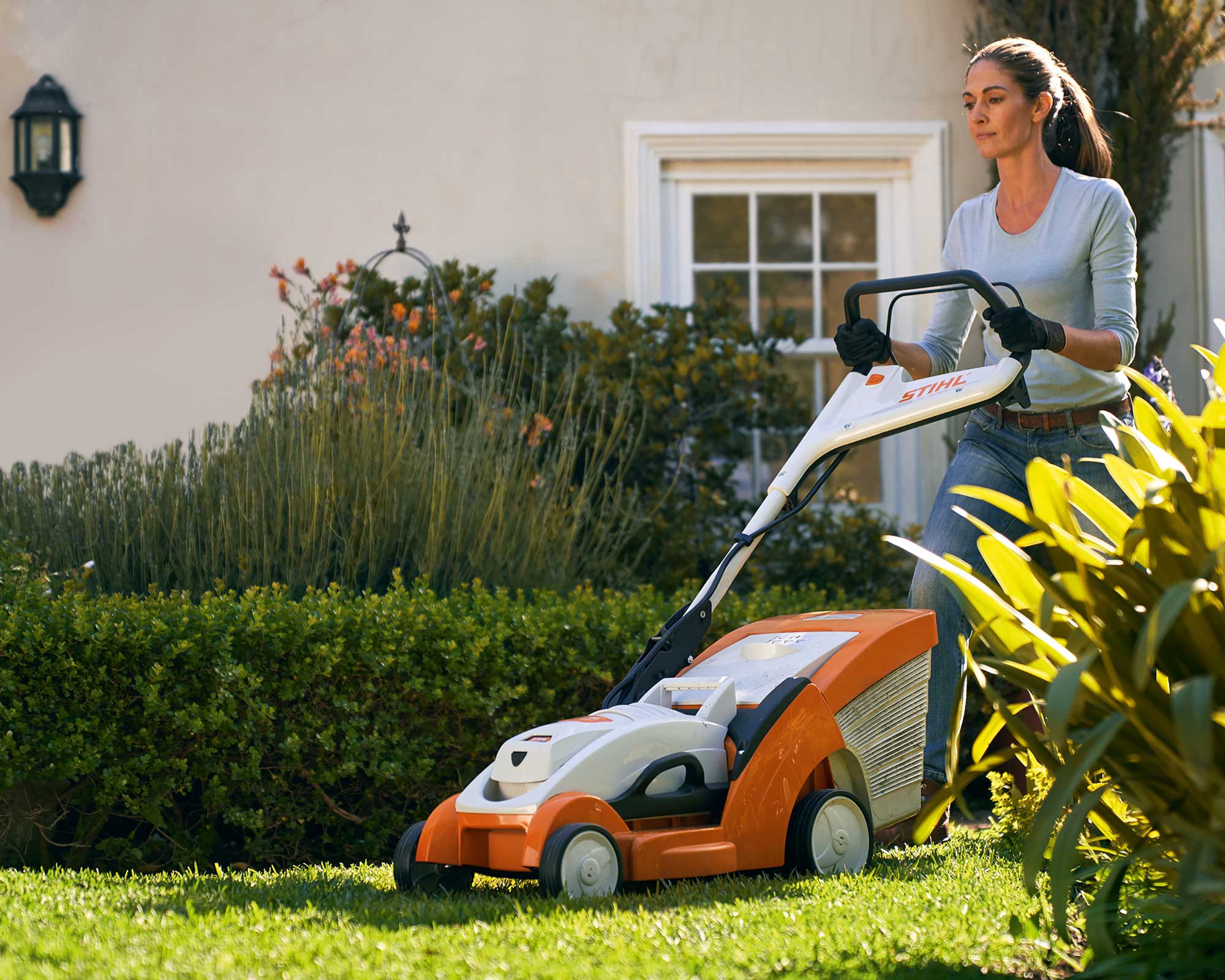
Can you leave clover in a lawn?
Sure, you can learn how to get rid of clover on a lawn and eradicate it once and for all. But, you can also 'simply leave it alone to thrive and become a green haven, even in times of drought,' says David.
'it can be very obtrusive, but to many, it can be loved,' he adds. And we're not just talking about gardeners growing fond of the pretty blooms – pollinators adore the nectar-rich flowers.
Why not fill your garden with bee-friendly plants and perhaps add some bug hotel ideas, too, to encourage even more visiting wildlife?
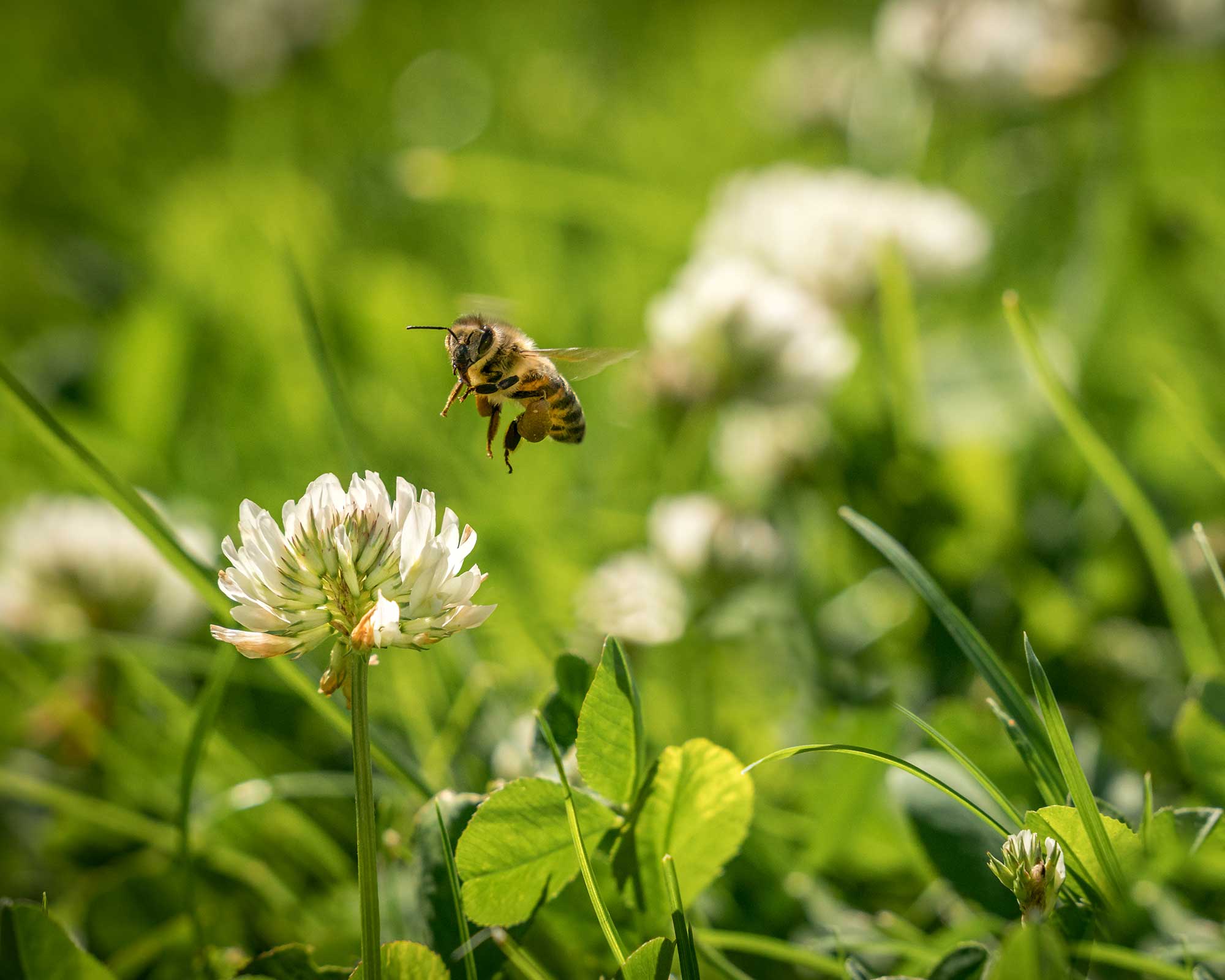
Will weed killer remove clover in lawns?
If you don't want to leave your clover to grow, and the methods above don't seem to be making a dent in the invasion, then it may be time to call in the best weed killers.
According to the RHS, white clover (Trifolium repens) is relatively susceptible to weed killer with dicamba and mecoprop-P, and may be eliminated after one or two applications.
Lesser yellow trefoil (Trifolium dubium), however, is tougher to get rid of with most lawn herbicides, as is birds foot trefoil, another clover-like species. Look for products containing fluroxypyr to tackle it.
The RHS adds how applying weed killer after August can be less effective. 'As the majority of clovers found in lawns self-seed freely, further applications the following spring will inevitably be required.'
And if you're looking for an alternative to traditional weed killers? 'During late spring, apply a liquid iron,' says David. He explains how the natural product will stress the leaf blades, allowing the grass to outcompete it. These organic products can work for eradicating moss and dandelions from lawns, too, and they won't damage the grass itself.
Whatever weed killer you go for, just be sure to follow the instructions carefully on the label, and keep them out of reach of children and pets.

The garden was always a big part of Holly's life growing up, as was the surrounding New Forest where she lived. Her appreciation for the great outdoors has only grown since then. She's been an allotment keeper, a professional gardener, and a botanical illustrator – plants are her passion.
